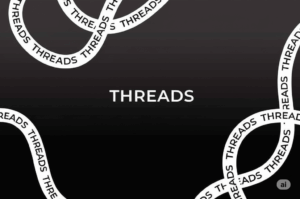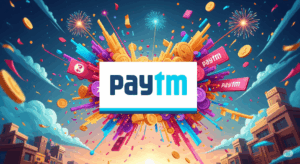Ever feel like you’re constantly juggling? One hand trying to grab today’s sales, the other trying to lay the groundwork for tomorrow’s empire? Welcome to the marketer’s perpetual challenge: the delicate balancing act between driving immediate revenue growth and cultivating lasting brand awareness. It’s a tension as old as marketing itself, but a recent Nielsen report really throws this dynamic into sharp relief.
Globally, the push for revenue is undeniable. Every business wants to see those numbers climb. Yet, something fascinating emerges when you look closer, particularly in North America and Asia-Pacific. Marketers there aren’t just focused on the immediate bottom line; they’re showing an almost even split in their attention to brand building. This isn’t just a quirk; it’s a powerful signal that even in leaner economic times, the enduring importance of a strong brand isn’t fading. So, how do we master this intricate dance?
Why the Tug-of-War? Understanding the Forces at Play
On one side of the rope, we have revenue growth. This is often driven by performance marketing – think those laser-focused ads designed to get clicks and conversions now. It’s about optimizing your bottom-of-funnel activities: enticing offers, seamless checkout processes, and targeted promotions. The appeal is obvious: immediate, measurable results that directly impact your business growth. In a world that demands quick ROI, it’s easy to pour all your marketing budget here. It feels safe, quantifiable, and directly tied to sales targets.
But here’s the rub: purely chasing short-term sales can be like trying to fill a leaky bucket. You might get a surge of new customers, but without a strong brand foundation, those customers might not stick around. This is where the other side of the rope comes in: brand awareness.
The Unsung Hero: The Power of Long-Term Brand Building
Brand awareness is all about getting your name out there, fostering familiarity, and building trust. It’s the top-of-funnel work that often seems less tangible in the short term but pays dividends over the long haul. Think about the brands you instinctively trust, the ones you turn to without a second thought. That’s not just about a great product; it’s about years of consistent brand building, thoughtful communication, and genuine connection.
- Building Trust and Loyalty: A strong brand creates emotional connections, leading to greater customer loyalty and repeat business. When people know and like your brand, they’re more forgiving of minor missteps and more likely to advocate for you.
- Increasing Market Share: A well-known brand naturally attracts more attention and can command a premium, ultimately expanding your market share.
- Future-Proofing Your Business: In an economic downturn, strong brands often fare better because they have built up goodwill and a resilient customer base. Investing in brand equity is like putting money in a savings account for your business’s future.
The Nielsen Report’s Wisdom: A Nod to Strategic Marketing
The fact that the Nielsen report highlights a near-even split in focus among North American and Asia-Pacific marketers on brand awareness vs. revenue growth isn’t an anomaly. It’s a sophisticated understanding that both are crucial for sustainable business growth. These regions, often at the forefront of marketing innovation, recognize that while immediate sales keep the lights on, a robust brand builds the house itself.
It’s about having an integrated marketing approach. You can’t just be a transactional machine. You need to be a trusted presence in the minds of your consumers. This means your marketing strategy needs to encompass both the quick wins and the enduring relationships.
Finding Your Sweet Spot: A Balanced Marketing Strategy
So, how do you find that sweet spot? It’s not about choosing one over the other; it’s about smart allocation and understanding where each fits into your overall marketing strategy.
Data-Driven Decisions for Both Ends of the Funnel
This isn’t guesswork. Leveraging data is key to understanding what’s working for both brand awareness and revenue growth.
- For Revenue: Dig into your conversion rates, customer acquisition costs, and immediate sales figures. Use tools to track the direct ROI of your performance marketing campaigns.
- For Brand: Look at metrics like brand recall, website traffic (beyond just conversions), social media engagement, brand sentiment, and organic search visibility. These tell you if your brand is resonating and building recognition.
Don’t Silence the Long-Term Vision
It’s tempting to cut brand building efforts when budgets are tight. But this is often a false economy. Think of it like maintaining your car. You need to fuel it up (revenue growth) to get around today, but you also need to do regular maintenance and oil changes (brand awareness) to ensure it runs smoothly for years to come. Neglect the latter, and you’ll soon be stuck by the roadside.
Encourage your team and stakeholders to see the bigger picture. Explain how brand awareness contributes directly to future revenue growth by reducing customer acquisition costs over time and fostering customer loyalty.
Creative Synergy: Brand and Performance Together
The best campaigns don’t separate brand from performance. They weave them together. A powerful brand message can make your direct response ads more effective because consumers already have a positive association with your company. Likewise, successful performance campaigns can introduce new customers to your brand, giving you an opportunity to nurture them into loyal advocates.
For example, a stunning digital marketing campaign focusing on your brand’s unique story (top-of-funnel) can drive traffic to your website, where carefully optimized landing pages (bottom-of-funnel) convert that newfound interest into sales. It’s all about understanding consumer behavior and guiding them through their journey.
The Art of the Balanced Marketing Investment
Ultimately, achieving consistent business growth isn’t about choosing sides in a marketing tug-of-war. It’s about building a robust, resilient operation where brand awareness fuels future demand, and revenue growth provides the resources to continue investing in your brand. Embrace the balance, understand the interplay, and your business won’t just survive – it’ll thrive, building a legacy one loyal customer at a time. It’s an exciting challenge, isn’t it?







